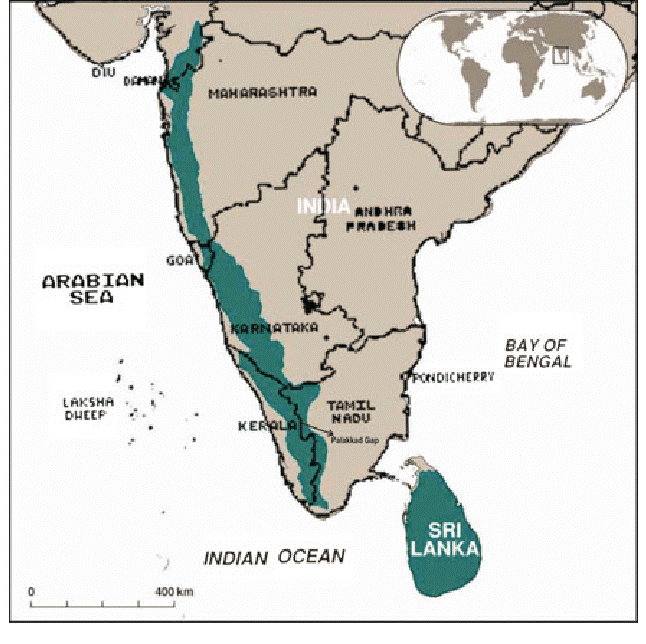Western Ghats: Battling Environmental Degradation and Cultural Loss
Why in the news?
The Western Ghats, a biodiversity hotspot, face threats from deforestation, climate change, and displacement of tribal communities. Authors and literary works highlight these alarming changes, emphasizing the need for conservation and cultural preservation.
Environmental Challenges and Threats:
- The Western Ghats, also known as Sahyadri Hills, span six Indian states and are renowned for their biodiversity and natural beauty.
- Rapid deforestation, climate change, land encroachment, and the displacement of tribal communities have severely impacted the region.
- Once filled with the sounds of chirping birds, many areas now echo with the roar of heavy machinery, signaling environmental degradation.
Literary Chronicles of Transformation
- Writers have captured the changing landscape and the societal impact through various works:
- Chronicle of an Hour and a Half by Saharu Nusaiba Kannanari highlights themes of rumors, mob mentality, and relentless rains.
- Kuvempu’s Malegalalli Madumagalu emphasizes the spiritual and agricultural ties people have with nature.
- Narayan’s Kocharethi depicts the marginalization of tribal communities due to industrial exploitation.
- Ringaan by Krushnat Khot portrays struggles linked to displacement and migration.
Preservation, Resistance, and Resilience
- Tribal communities exhibit resilience by clinging to their cultural heritage despite external threats, as shown in Sheela Tomy’s Valli.
- Books like Flood and Fury by Viju and The Nilgiri Hills by Paul Hockings explore ecological devastation and urge conservation.
- Authors assert that safeguarding the Western Ghats is vital for preserving its cultural legacy and biodiversity.
Western Ghats and its Conservation Efforts:
- About Western Ghats:
- Mountain range along India’s western coast, spanning 1,600 km.
- UNESCO World Heritage Site, one of the world’s 36 biodiversity hotspots.
- Home to fragmented high mountain forests, affected by human activities like plantation farming.
- Conservation Efforts:
- In 2010, MoEFCC formed WGEEP chaired by Dr. Madhav Gadgil.
- Recommendations: Designate entire region as Ecologically Sensitive Area (ESA), halt harmful development activities, establish a Western Ghats Ecology Authority.
- Resistance and New Panel:
- States resisted Gadgil’s recommendations fearing development restrictions.
- In 2012, Dr. K. Kasturirangan’s panel recommended 37% as ESA and split regions into cultural and natural zones.
- Status of Implementation:
- In 2017, MoEFCC designated 56,825 sq km of Western Ghats as ESA, less than the Kasturirangan panel’s recommendation.




